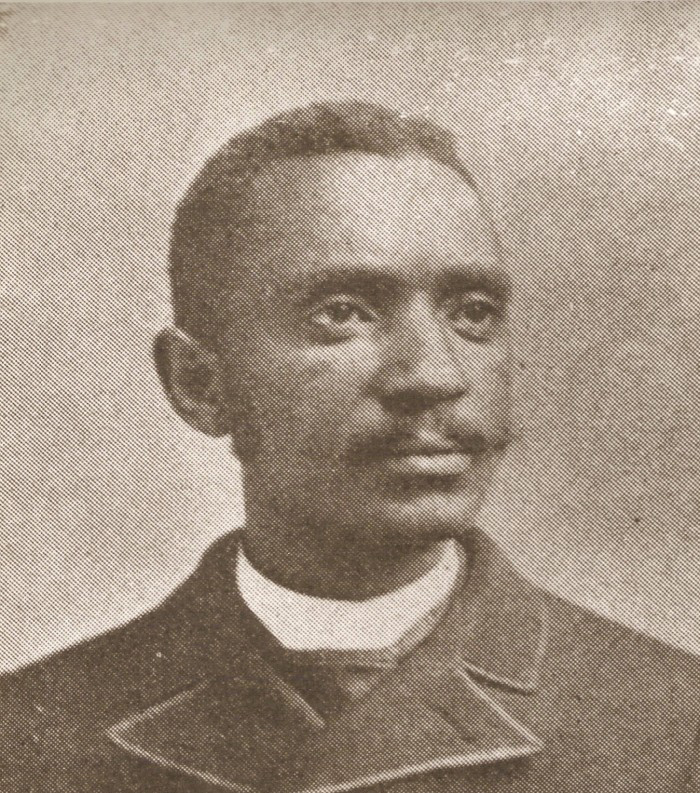Daniel Rudd is one of those nearly forgotten names in Black history who was truly a mover of humans in his day and time. If he comes to mind at all, it is because of his work in organizing the first National Black Catholic Congresses in the 1880s and 90s. Through that effort and his publication of the American Catholic Tribune, first named the Ohio State Tribune, Rudd moved many to openly speak out on the race problem in America and to propose concrete actions to resolve it.
Rudd was born August 4, 1854 on the Anatok plantation near Bardstown, Kentucky. He was one of 11 children born to enslaved parents – Robert and Elizabeth Rudd. He was, thus, born as an enslaved person. Because slavery ended while he was still a young child, however, he was able to move to Springfield, Ohio; finish high school; and learn the newspaper trade.
His Black pride and respect for the importance of education led him to take action toward desegregating the public schools of Springfield. By 1885, he pushed such issues in the newspaper which he started publishing in Cincinnati in 1885. The Ohio State Tribune, later named the American Catholic Tribune, became the first Black Catholic newspaper in the country. Because he was such a strong and devout Catholic and had such racial pride, the issue of race was expounded upon quite frequently and quite heavily. These same feelings would lead him to expand his efforts beyond the paper to include organizing the first Black Catholic Congress.
In these endeavors, he was somewhat unique, even as a man of vision. For him, the portrait of the Catholic church was not that generally thought of as emanating from White America, Western Europe, or even Rome. His vision and his heroes were from Africa and included such Black saints as Augustine, Monica, Cyprian, and Benedict the Moor. In that sense, the Catholic church was not “a White man’s church,” as claimed many critics. It was a universal church that began in Africa.
By the same token, he viewed the Catholic faith through its basic theology and social teachings. In his eyesight, it was the only place on the continent where all people – rich and poor, Black and white – could approach the altar as equals.
As a result of his deep religious faith, he used his paper to not only inform the public of the issue of race, he used it to propose solutions, such as equally funding all schools and fully admitting Black workers to labor unions. He used the paper to urge Black people, especially Black Catholics, to come together in order to have a stronger voice. He used the paper to challenge white Catholics, who were not acting according to the church’s teachings – to become fully Catholic because he saw them as less than such according to their actions.
Four years after he began publishing the Ohio State Tribune, Rudd began organizing the first National Black Catholic Congress. It met five times between 1889 and 1894. This was an amazing feat considering the fact that this was during the height of the period of “Southern Redemption” and given the reluctance of many, even Black church people, to speak out openly about the problem of racism.
Thus, it is not surprising that the Black Catholic Congress Movement died a quiet death after Rudd was replaced by a liberal white clergyman and amidst a dwindling Black participation. Although the National Black Catholic Congresses were not to be revived until 1987, Rudd had planted the seed and nurtured it well.
Daniel Rudd died December 3, 1933 after having lived and worked in Mississippi and Arkansas, completing a full and fruitful life. He was an effective journalist, businessman, and civil rights advocate. More than that, however, he is a most-worthy model, anti-racist organizer, and activist in at least six ways. (1) He demonstrated how circumstances may hinder, but cannot define an individual; that one can take advantage of and utilize circumstances to bring about change. (2) He chose to focus on Africa and Black pride as sources of his spiritual development. (3) He was determined to be a fighter for civil and human rights. (4) He realized the importance of speaking up in order to find kindred spirits as well as to influence others to join the cause. (5) He recognized the strength of numbers, the need for unity. (6) He realized the need to challenge Black people who preferred to remain silent and “religious” white people who were hypocritical when it came to the issue of race. Rudd truly belongs in the pantheon of Black heroes, not the annals of forgotten warriors.







